Spanish Civil War tours in Barcelona and history of the war
Tour of george orwell’s barcelona, homage to catalonia guided tour in barcelona.
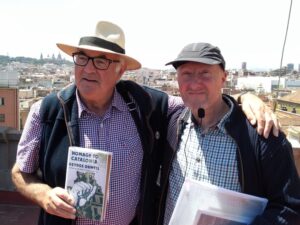
We discuss George Orwell on our main Spanish Civil War tour but if you’re interested in a more detailed vision, we also do a specific tour of the English writer’s experiences in Barcelona. This is only available as a private tour and costs 250 flat for 3 and a half hours. It also functions as a walking museum, with a number of related objects. We’d stop somewhere for a coffee while continuing the story. To book email [email protected]
George Orwell’s Homage to Catalonia is almost certainly the most widely read account of the Spanish Civil War in English. It is a brilliantly written memoir of his experiences, accompanied, sentence after sentence, by acute personal observations and sharp if sometimes flawed political analysis. We discuss his arrival in revolutionary Barcelona and on to fighting with the POUM militia on the Aragón front. Then we”ll bring the story back to Barcelona and discuss his role in the leftist infighting known in English as the May Days and how he later escaped from the Stalinist-influenced police. Returning to Britain, we’ll talk about the book’s publishing history and impact, and how Orwell’s time in Catalonia and Aragón greatly shaped his future writing. We’ll end by considering how much of his political analysis of the conflict stands up to today’s historical understanding.

Tours with the Orwell society with Orwell’s son Richard Blair and Quentin Kopp
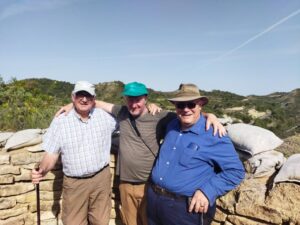
I have done several tours with Richard and Quentin in Aragón, sons of Orwell and his commander Georges Kopp. Photo to the left: in the restored POUM position of the Ruta Orwell in the Sierra de Alcubierre. It was damned hot.
See George Orwell in Aragon
The Orwell Society field trip to Barcelona and the trenches (2022)
Publishing Homage to Catalonia
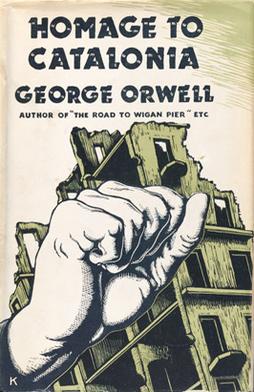
First edition of Homage to Catalonia by George Orwell. Orwell had great difficulties in publishing Homage to Catalonia, his experiences of the Civil War in Aragón and the revolution in Barcelona. His old publisher Victor Gollancz rejected it, in part under pressure from the Communist Party. It was finally published after months of rejections in late 1938 by the small outfit of Secker & Warburg. The first edition was a commercial flop and the 1500 copies did not sell out until 1951, a year after Orwell’s death. Image kindly provided by Professor Pelai Pagès i Blanch, specialist in the POUM at Barcelona University. The book forms part of his personal collection.
George Orwell Day in Barcelona
We are also co-founders and organisers of the annual Barcelona Orwell Day (2013-2023).
Reading and media for Homage to Catalonia
- Homage to Catalonia (Wikipedia)
- Looking back on the Spanish War essay by George Orwell (1943)
- As I please by George Orwell. Column published in Tribune (15 September 1944)
- My guidebook Forgotten Places: Barcelona and the Spanish Civil War is available in print and on Kindle. It includes about 20 pages on Orwell (out of total of 400 pages)
- Lights and shadows in George Orwell’s Homage to Catalonia . (2017, PDF) Paul Preston’s ferocious critique of Homage to Catalonia
- With the POUM International volunteers on the Aragon Front ( 2018, PDF) By Andy Durgan. Excellent article
- George Orwell’s Commander in Spain: The Enigma of Georges Kopp by Marc Wildemeersch (2013)
- Eileen: The Making of George Orwell by Sylvia Topp (2020)– book review in The New Statesman
- The Ministry of Truth: A Biography of George Orwell’s 1984 -book review in The Guardian
- David Crook . The man who spied on Orwell in Barcelona (Wikipedia)
- VIDEO: George Orwell BBC Arena Part 3 Homage to Catalonia (YouTube). Made in 1983
- AUDIO: BBC Radio 4 – Bookclub, George Orwell’s Homage to Catalonia
- Tour in Spanish George Orwell en Aragón. Routes in Spanish by Aragonese Orwell expert Victor Pardo.
- Centro de Interpretación de la Guerra Civil en Aragón. In the village of Robres .
- TOUR George Orwell’s London by Diarmaid Ward . http://orwellslondontour.webs.com/
A Look At George Orwell's Barcelona

Back in 1936 when the young Eric Blair – better known under his pen name George Orwell – arrived in Barcelona, the city was in the grasp of an ugly civil war. Some 80 years later, the Catalan capital still bears the scars of its violent past – the legacy of the events described by the author in his Homage to Catalonia isstill visible to those willing to scratch the surface of this historically-loaded city.
Barcelona in the civil war.
Stroll through the center of Barcelona today and you’d struggle to imagine that less than 100 years ago it was the site of bloody confrontation. The brightly-lit windows of the designer boutiques on Passeig de Gracià or the trendy brunch cafés in Sant Antoni say little of the city’s turbulent past. And yet, if you look a little closer, you’ll find that there are traces of this brutal period of the history everywhere.

Among the hip bars that line Carrer Joaquin Costa, between the vintage stores and the skate shops, look up a little and eventually you’ll notice the black and red flag of the CNT. This anarcho-syndicalist worker’s union was founded in Barcelona in 1910, and throughout the civil war played a key role in the fighting, at times controlling most of Barcelona. Today the office on Joaquin Costa still operates as the HQ of an active branch of the CNT. Describing the CNT’s presence in the city at the time, Orwell wrote: ‘ It was the first time I had ever been in a town where the working class was in the saddle. Practically every building of any size had been seized by the workers and was draped with red flags or with the red and black flag of the Anarchists, […] every shop and café had an inscription saying that it had been collectivised; even the bootblacks had been collectivised and their boxes painted red and black. ‘ Perhaps one of the places where the traces of the conflict are most visible is the small square known as Plaça Felipe Neri in the Gothic Quarter . Look closely at the walls of the old church which borders the square and you’ll see the shrapnel marks of a bomb which was detonated here in 193, killing 42 people. Most of the victims were children who had sought refuge in the church basement but were killed by the fire that engulfed the building.
Orwell’s Voyage to Barcelona
It was just months after the military coup launched against the Spanish government by the Nationalist army, led by General Francisco Franco, that young Eric Blair and his wife Eileen O’Shaughnessy embarked on the journey to the Catalan capital. A staunch socialist by then, Orwell wished to take up fight against the Nationalist army led by General Franco and has contacted the head of the British Communist Party to request he put him in contact with someone in Barcelona.

Become a Culture Tripper!
Sign up to our newsletter to save up to 500$ on our unique trips..
See privacy policy .

It was by coincidence that Orwell enlisted with the forces of the POUM – an anti-Stalinist ‘Workers’ Party of Marxist Unification’ – with whom he fought from December 1936 until June 1937. Soon after joining, he was sent to the front line in Aragon, fighting around the towns of Zaragoza and Huesca. He returned to Barcelona in May 1937, seeing his wife for the first time in months, but was soon caught up in a bloody battle between differing left-wing forces and the Republican Government.
Soon embroiled a vicious internal conflict between the POUM and other allies on one side, and the Moscow-lead Communist forces on the other. In June 1937 Orwell and his wife escaped from Barcelona, traveling safely to Paris before returning to England. It was here that he began to write his autobiographical account of his experience throughout the war, Homage to Catalonia , which was published in 1938.

What emerges throughout the book is the sense of bitter disappointment George Orwell felt in the face of the crushing of the socialist ideals which he had felt ripple through the city before his departure to the front. For Orwell, Barcelona at the beginning of the Civil War was home to an optimistic sense that the revolution was possible. He had seen first hand the effects of the removal of class barriers and symbols of oppression, only to find that they soon returned when hatred of the totalitarian Communist regime outgrew that of the old order.
More than just a narration of the events that unfolded at the beginning of the war, Homage to Catalonia captures something of the revolutionary spirit which was shared by so many at the time. In his own words, Orwell claimed that: ‘No one who was in Spain during the months when people still believed in the revolution will ever forget that strange and moving experience. It has left something behind that no dictatorship, not even Franco’s, will be able to efface’. In a country which still today struggles with the legacy of its bitter civil war, Orwell’s work continues to resonate with many readers for whom, more than just a piece of literature, Homage to Catalonia is a piece of history which many have yet to come to terms with.

KEEN TO EXPLORE THE WORLD?
Connect with like-minded people on our premium trips curated by local insiders and with care for the world
Since you are here, we would like to share our vision for the future of travel - and the direction Culture Trip is moving in.
Culture Trip launched in 2011 with a simple yet passionate mission: to inspire people to go beyond their boundaries and experience what makes a place, its people and its culture special and meaningful — and this is still in our DNA today. We are proud that, for more than a decade, millions like you have trusted our award-winning recommendations by people who deeply understand what makes certain places and communities so special.
Increasingly we believe the world needs more meaningful, real-life connections between curious travellers keen to explore the world in a more responsible way. That is why we have intensively curated a collection of premium small-group trips as an invitation to meet and connect with new, like-minded people for once-in-a-lifetime experiences in three categories: Culture Trips, Rail Trips and Private Trips. Our Trips are suitable for both solo travelers, couples and friends who want to explore the world together.
Culture Trips are deeply immersive 5 to 16 days itineraries, that combine authentic local experiences, exciting activities and 4-5* accommodation to look forward to at the end of each day. Our Rail Trips are our most planet-friendly itineraries that invite you to take the scenic route, relax whilst getting under the skin of a destination. Our Private Trips are fully tailored itineraries, curated by our Travel Experts specifically for you, your friends or your family.
We know that many of you worry about the environmental impact of travel and are looking for ways of expanding horizons in ways that do minimal harm - and may even bring benefits. We are committed to go as far as possible in curating our trips with care for the planet. That is why all of our trips are flightless in destination, fully carbon offset - and we have ambitious plans to be net zero in the very near future.

Guides & Tips
The best private trips to book for your spanish class.

See & Do
Getting a taste of picasso in malaga.

The Best Private Trips to Book for a Foodie Adventure

The Most Unique Temples and Churches in the World

The Most Beautiful Train Stations in the World

Top Tips for Travelling in Spain

The Best Places to Travel in June

Places to Stay
The best hotels to book in salou, catalonia.

The Best Hotels to Book in Catalonia

Bars & Cafes
The best wine bars in la rioja, spain.

Reasons Why You Should Visit La Rioja, Spain

Reasons Why You Should Visit Andalucia, Spain
Winter sale offers on our trips, incredible savings.

- Post ID: 913731
- Sponsored? No
- View Payload
Barcelona blog
- *Iberianature
- Civil War tours
- Green Barcelona tour
- Press&TV
- Virtual Spanish Civil War Museum
- Youtube talks
George Orwell tours in Barcelona
This tour is centred on George Orwell’s experiences in Barcelona between his arrival on Boxing Day 1936 to his escape from Catalonia pursued by the Stalinist secret police in the summer of 1937. Orwell came to the city with is wife with the idea of covering the war as a journalist, but as soon as he arrived he was captivated by the revolutionary events, and presented himself to the international ILP Office, proclaiming, “I’ve come to fight against Fascism”.
A new version of this George Orwell tour with much more details and information is here
After fighting with the POUM militia on the Aragonese Front, in late April, Orwell cam back to to Barcelona with the idea of leaving his unit and joining the International Brigades so he could take part in the defence of Madrid. But, as the official communist party tried to crush the libertarian revolution, the Barcelona May Days erupted and Orwell was found himself forced to defend the POUM’s headquarters in the Rambles. An uneay ceasefire was declared out of which the Stalinists emerged victorious. This was followed by a hateful campaign of lies and distortion in the Spanish and international Communist press, in which the POUM was accused of being closet fascists. Witnessing this at first hand had a dramatic effect on Orwell, later inspiring him to write 1984 and Animal Farm .
The tour takes in some of the places Orwell describes in Homage to Catalonia , and also looks at the principal events of the Spanish Civil War in the city. More here
- Julian Trevelyan’s collage Bolton
- Fossar de la Pedrera tour
- Street art in Barcelona
- A bodega in Barcelona
- Barcelona’s Somorrostro
- Top Destinations
- Mexico City, Mexico
- Tokyo, Japan
- Paris, France
- Rome, Italy
- London, United Kingdom
- All Destinations
- Upcoming Experiences
- Walking Tours
- Small-Group Tours
- Tours for Kids
- Museum Tours
- Food, Wine and Market Tours
- Newly Added Tours
- Audio Guides
- Pre-Trip Lectures
- Admin Dashboard
- My Favorites
- Client Orders
- Monthly Commissions
- My Advisor Profile
- Advisor Toolkit
- Guide Dashboard
Credit Balance
Transactions are based on current exchange rates and performed in USD. There maybe slight variations in the price estimates.
Spanish Civil War Tour in Barcelona: Homage to Catalonia

- Plaça Catalunya
- Teatro Principal
- Plaça George Orwell

- Explore the impact of the Spanish Civil War in Barcelona
- Led by a Spanish Civil War historian
- Small group size—no more than six people.
"Wow! This tour introduced us to an area of Spanish history we knew a bit about but certainly not in depth. It was a fascinating walk, and we intend to go home and learn a lot more. The docent was very helpful and shared much knowledge and many interesting anecdotes. It really made the period come alive for us."
Spanish civil war in barcelona, tensions within the republic.

Reviews can only be left by Context customers after they have completed a tour. For more information about our reviews, please see our FAQ .
You May Also Like
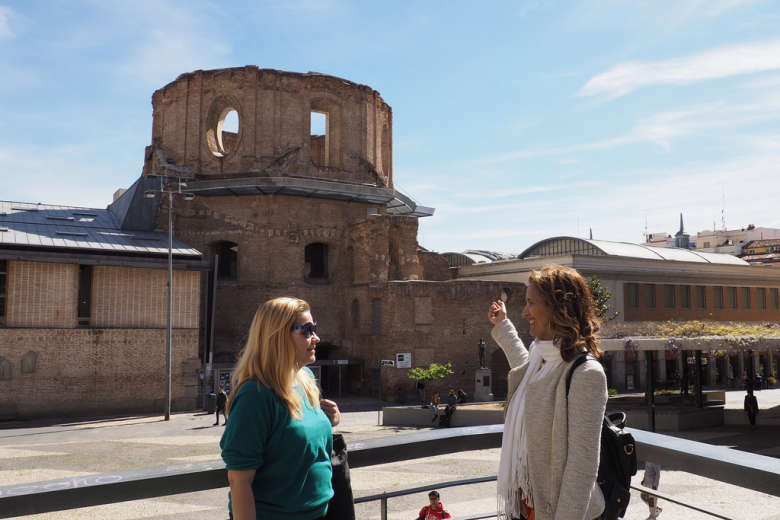
Spanish Civil War Tour in Madrid with Picasso's Guernica
Book a tour.
- Our Experts
- Working with Context
- View All Cities
- Sustainable Tourism
- Refer a Friend for $50
- Travel Updates
- Advisor Login
- Expert Portal
Subscribe to our Newsletter
- Privacy Statement & Security
- Cancellation Policy
Our website uses cookies to personalize your experience, perform analytics, and tailor ads. By clicking accept, you consent to our use of cookies. To view our data privacy policy, click here .
Our website uses cookies to personalize your experience, perform analytics, and tailor ads. By using our site, you consent to our use of cookies. To view our data privacy policy, click here .

Barcelona Tours
Get to know and love barcelona with our english speaking barcelona city tours., george orwell and the spanish civil war barcelona tour.

On this guided tour we accompany George Orwell and travel to the war-torn Barcelona of the thirties, which he depicts so vividly. We experience those first few months when the people from Barcelona enthusiastically celebrated the revolution after defeating the right wing rebels. It seemed that finally the dream of a progressive and just society had become reality. But disillusionment would soon set in. The first glorious months were followed by street fighting between various leftish groups, the Stalinist terror, propaganda, the bombs that Mussolini’ s squadrons dropped over the city, and the terrible years of famine. The third act ends with the defeat of the Republic and the gruesome victory of the fascists.
We not only explore the events of those appalling war years, we also dig into the everyday life of average citizens and discover what it was like to live through those terrible times. We hear eyewitness accounts and find out what their everyday hopes and concerns were. And then we look at what came afterwards.
This tour can only be booked as a private tour!
Organization
Price for private tour (per group):
1-2 persons: 160 € (132,23 € plus 21 % tax)
3-4 persons: 170 € (140,50 € plus 21 % VAT)
5-6 persons: 180 € (148,76 € plus 21% VAT)
7-8 persons 190 € (157,02 € plus 21% VAT)
10 persons: 200 € (165,29 € plus 21% VAT)
each additional person 10 € (8,26 € plus 21% VAT)
Meeting point: Plaça de l’Àngel 12, opposite Hotel Suizo, Metro Station Jaume 1, yellow line
Reservation
Only bookable as private tour. Send us a booking request by filling out the contact form. You will then receive an offer for the private tour.
Beyond Orwell and Hemingway
- Booking and Contact
- Reading List
Welcome to Beyond Orwell and Hemingway! The Barcelona Literary Tour takes you on a walk around the city visiting sites relevant to authors, novels and the history of the city. You will see the houses of famous authors, the haunts of their characters and learn about the city and the writers it has attracted over the last millennium! We will explore the words and worlds of writers both local and from abroad!
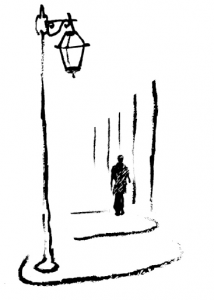
What the tour covers:
- George Orwell and Homage to Catalonia
- Ernest Hemingway and Martha Gellhorn in Spain
- The Shadow of the Wind
- Cathedral of the Sea
- Literary history of Barcelona
- Catalan Medieval, Renaissance and Modern Literature
- Latin American Boom
- Contemporary Catalan and Spanish Authors
- And much more…
- Adults – €30
- Age 12 – 16 – €10
- Under 12 – Free
Duration: 3.5-4 hours
The tour includes a stop in a bar or cafe that allows for a break and to grab some drinks and/or food (not included in the cost and are optional).
A shorter version of the tour is available upon request and takes approximately 2.5 hours and does not include a break.
Availability:
The tour runs several times a week and usually starts at 10am and 2pm
Additional dates and times are possible, please contact for more information.
To book please contact barcelonaliterarytours at gmail dot com
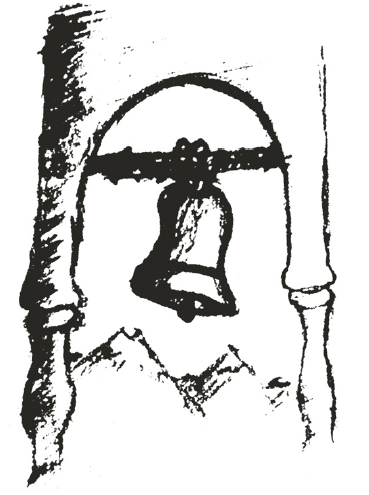
A fun, fascinating way to explore Barcelona. Tadhg did a great job evoking the city’s past through the stories of the great authors that lived, loved, fought, and occasionally died here. Both erudite and accessible, highly recommended even if (like us) you haven’t read most of the works he discusses. Perfect for bookworms and curiosity seekers alike. Jordi – Montreal, Canada – January 2023
Hands down the best tour experience I’ve ever had. If you’re in Barcelona you must go on this tour!!! If you’re into Bolaño (as I am) it’s worth the trip alone. I learned so much about old favorites and entirely new writers, especially Catalonian ones. Tadhg is so engaging and personable and knowledgeable about literature and Barcelona, and really made a point to understand my interests and show me related landmarks. It was so wonderful to converse with him about all sorts of topics as we were walking or having a refresher in between the literary stops! You should book this tour and have this fantastic experience for yourself 🙂 Yuqing – Chicago, United States – September 2022
This is an amazing tour! We really enjoyed the whole tour with Tadhg. He is very structured in storytelling. We really love Tadhg’s way of sharing his knowledge about Barcelona. In this 4 hours journey, we do not feel like a typical tourist but rather feel like hanging out with an old friend. Tadhg is very open-minded, knowledgeable and calm. For people who do not know about Spanish and Catalonia Literatur, or about Garcia, Hemingway and Orwell, it is a great intro to get to know more. For people who already have good knowledge of literature, it is great chance to know more about how these great literature work are related to Barcelona! For people who are not into literature, this tour will give you a new angle of viewing Barcelona! In the end, we enjoyed coffee together with Taghg. It is such a lovely, comfortable and informative afternoon with him! I would recommend it everyone who visits Barcelona. You will not regret it! Xu – Hamburg, Germany – April 2022
I went on a literary tour with Tadhg expecting it to be just another generic walking tour filled with random disjointed facts but without context. However I came out from the experience with a renewed awe of the city as I managed to connect how these disparate group of writers and stories were able to collectively express and present the multilayered, complex and diverse history of Barcelona. This is, and what all literary or walking tours should be — allowing the audience to get closer to understanding the soul of a city — and Tadhg managed to hit that gold standard. This is because what you get from the tour is not a dry rehearsed Lonely Planet or Wikipedia version of Barcelona — but rather a lively explanation of how literature intertwined with history, politics and society. What made it more special was Tadhg’s generous sharing of his own personal experiences of the city and his perspectives of the varied literary works. The experience was therefore very unique and personal, giving you more insights that guidebooks or self tours cannot replicate. Edwin – Singapore – October 2021
I went on this excursion with my boyfriend who is from Barcelona and he says that Taghg has a very strong knowledge on Spanish and Catalan literature and a deep understanding of the Catalan civil war which is very helpful when learning about the novels written in Catalonia and Spain in the 20th century. My boyfriend and I went to a bookshop straight after the tour to buy the books Taghg mentioned in the tour. This guy will make you feel inspired!!! Strongly recommend!!! Ilana – London, United Kingdom – August 2021
More reviews…

literarybarcelona

© 2024 The Barcelona Literary Tour
Theme by Anders Norén — Up ↑

Dia Orwell: Barcelona's Homage to George Orwell
by Catherine Howley
May 28, 2023

George Orwell Plaza, Barcelona, sculpture by Leandre Cristòfol. Photo by Vicente Zambrano González courtesy of Ajuntament de Barcelona (CC BY-NC-ND 4.0).

George Orwell Plaza, Barcelona, sculpture by Leandre Cristòfol. Photo by Enfo (CC BY-SA 3.0) via Wikimedia Commons.

On December 26, 1936, Eric Arthur Blair, known to most as author George Orwell, stepped off the train at Estació de França in Barcelona. He would spend the next six months traveling between the regions of Catalunya and Aragon in a fight against fascism, an experience that would inspire his 1938 novel Homage to Catalonia .
The premise of the novel—the outbreak of the Spanish Civil War —spurred Orwell’s decision to move to Spain. Defining himself as a socialist, he had a vague notion of writing a piece on the events unfolding in the country. However, it was only a matter of days before he traded his pen for a weapon and joined a militia group in defense of the Second Spanish Republic against Franco and his Nationalist forces.
Orwell’s first impressions of Barcelona would stay with him. An anti-fascist stronghold for most of the war, the city had become a reflection of the complex factions of the left. United in battle against Franco, they were divided in their concept of an ideal society—those who supported the Republican government and those who idealized revolution. Upon his arrival, Barcelona was in the midst of what was essentially an anarchist revolution, a fervor which had gripped the Catalan capital at the onset of the war.

Street sign in George Orwell Plaza. Photo by Adam Jones (CC BY-SA 2.0) via Wikimedia Commons.
He recalls his first walk up Las Ramblas in Homage to Catalonia :
“It was the first time I had ever been in a town where the working class was in the saddle. Practically every building of any size had been seized by the workers and was draped with red flags or with the red and black flag of the Anarchists, […] every shop and café had an inscription saying that it had been collectivized.”
Within a few weeks the author would leave behind revolutionary Barcelona for the trenches in Aragon. The militia he joined, more or less by accident, was that of the POUM (the Workers’ Party of Marxist Unification), a rather small group of anti-Stalinist revolutionaries. He was sent to the front line near the towns of Zaragoza and Huesca where he spent the next few months braving the cold and miserable conditions in the name of anti-fascism.
Orwell returned to Barcelona in May 1937, by which time the city had changed considerably. Underlying tensions were coming to a head, and on May 3rd a struggle between anarchists and the Catalan police exploded into five days of vicious infighting among the leftist factions. The revolutionary experiment would come to a tragic end as the local government reclaimed total control of the city.

Eric Arthur Blair, known to most as author George Orwell.
Having survived the street fighting, the author returned to the front, only to be shot through the neck 10 days later by a Francoist sniper—the bullet just missed his carotid artery. Although a lucky escape, it took Orwell weeks of recuperation before he could return to Barcelona. This would be his last time in the city, and once again he narrowly escaped with his life.
Blamed for the infighting in May, the POUM was declared an illegal organization. Now a fugitive in the city, and after weeks of hiding, Orwell finally fled back to England.
Once home, he began to write a raw and honest personal account of his observations and experiences of the Spanish Civil War, which would become Homage to Catalonia . Not just a wartime journal, the book addresses the lies, manipulation and political tyranny from both the right and the left that he witnessed, no doubt laying the groundwork for his most celebrated work, 1984 (1949).
Orwell Day Events
Every year the Centre de Cultura Contemporània de Barcelona (CCCB) commemorates George Orwell and his passion for overcoming social injustice. This year from June 6th to 8th the celebrations address the rise of the far right with an expert on populism, Cas Mudde , the dangers of an Internet controlled by big corporations with Geert Lovink , director of the Institute of Network Cultures, and the memorization of the Spanish Civil War with the historians Aitor Garcia Solé and Queralt Solé Barjau, the researcher Marta Marín-Dòmine, professor Miquel Berga, and the actresses Paula Vicente Mascó and Berta Cascante.
Events include free tours led by local historians retracing Orwell's steps in Barcelona. These routes through Orwell’s Barcelona offer a different perspective on the Barcelona we live in today (registration required).
For more tours about Orwell and the Spanish Civil War throughout the year see:
Turisme de Barcelona
Be Local Tours
Nick Lloyd's Spanish Civil War Tour
This article was published June 1, 2017, updated May 28, 2023.

Internships
Advertise with us, popular on our page, food reviews, visit our archive.
2023 All Rights Reserved.
2023 All Rights Reserved. Barcelona Metropolitan
Discovering George Orwell’s Barcelona
This article was published more than 8 years ago. Some information may no longer be current.
Most visitors to Barcelona come to enjoy the tapas and the beaches, to gaze in wonder at Gaudi’s architecture and Picasso’s art, to promenade on the Ramblas or shop on the Passeig de Gracia. But for those with an interest in political or literary history the city has another side, hidden from the view of the average tourist. For Barcelona was the place where one of the most important political writers of modern times learned what he was writing for, and against.
The year 1937 found George Orwell in Spain, fighting on the Republican side in the Civil War against Francisco Franco’s Nationalists. While on leave in Barcelona, the capital of the northeastern Spanish region of Catalonia, he was caught up in a nasty round of street fighting between leftist factions. The experience shook him, helping shape what would become his most famous books: Animal Farm and 1984 .
To get a close-up feel for the drama of those days, I signed up for a tour of Orwell’s Barcelona. I’m a lifelong Orwell buff who ripped through all his stuff in my 20s. Joining me (or humouring me) were my wife and three children, aged 14, 21 and 24. All but my 14-year-old daughter had been to Barcelona before, so they were willing to try seeing the city through a different lens.
Our guide was Alan Warren, an English expatriate and civil war buff with baggy pants and a pencil moustache that is, perhaps not by coincidence, much like Orwell’s. We made arrangements to meet him at the Café Zurich on Plaça de Catalunya, one of Barcelona’s main squares.

After talking us through the outline of Orwell’s stint in the city, showing us photographs and newspaper clippings from the time, he led us on a three-hour walk that took in all the landmarks of the little war within a war that influenced the writer so deeply. Though Mussolini’s Italian air force bombed Barcelona during the Civil War, destroying many buildings, most of the places where Orwell spent time are still there – all of them on or near the Ramblas, the city’s famous central avenue.
When he first came to Barcelona, Orwell was inspired by what he saw. Parties of the revolutionary left had taken control of the city. Their colours and banners flew from every big building. A feeling of brotherhood was in the air. “Waiters and shop-walkers looked you in the face and treated you as an equal,” he wrote in his vivid war memoir, Homage to Catalonia . “It was the first time that I had ever been in a town where the working class was in the saddle.”
When he returned in the spring, after several miserable months at the front, things had changed. Old class divisions had reappeared. “Fat prosperous men, elegant women and sleek cars were everywhere.”
Tension between left factions was growing. The Communists, backed by Stalin’s Russia, which had intervened in the civil war on the Republican side, were gaining power. The Anarchists, a powerful force in the city for years, were on the wane.
The fighting started on May 3. “About midday,” Orwell wrote in Homage , “a friend crossing the lounge of the hotel said casually: ‘There’s been some kind of trouble at the Telephone Exchange, I hear.’ For some reason I paid no attention to it at the time.”
It turned out that government troops had moved against the Anarchist forces that controlled the exchange, a strategic outpost in the heart of the city. The Anarchists rose up in response, tearing up the cobblestone streets to build scores of barricades. The Communists, who were nominally allied with the Anarchists against Franco, but were in fact their bitter rivals, seized the opportunity to try to break the Anarchists– an independent force of the left, unbeholden to the Kremlin, that they could not abide.

Warren took us first to the telephone exchange. As he told us, government forces are believed to have attacked it in part because the Anarchists who controlled it were listening in – and sometimes interrupting – as high officials talked to each other on the phone. “We have more interesting things to do than listen to your stupid conversation,” one of them said when he broke in on a conversation between the president of the Spanish republic and the president of the Catalonian regional government. They were not amused.
Our next stop was the grand old Hotel Continental, where Orwell’s wife, Eileen, stayed during the troubles. When police rousted her room, looking for evidence that Orwell was some kind of subversive, she was lying in bed, and the police, perhaps out of some remaining sense of chivalry, never searched in or even under it, though they seized many of his books and papers.
A little way down the Ramblas, Warren showed us the former cinema where Orwell was stationed during much of the fighting. Unlike many foreigners who came to Spain to defend the Republic, Orwell did not sign up for the famous International Brigades. Instead, he found a place in a Marxist revolutionary party, known as the POUM after its Spanish acronym. So when the fighting in Barcelona started, he made his way down the Ramblas to the POUM headquarters to the sound of crackling rifle fire and the “snap-snap-snap” of storekeepers drawing down their metal shutters.
He was eventually sent to the roof of the cinema to stand guard. Orwell had little to do but wait for something happen, and spent much of his time reading Penguin Library books while the sound of sporadic gunfire came up from the street.

“I was in no danger, I suffered from nothing worse than hunger and boredom, yet it was one of the most unbearable periods of my whole life. I think few experiences could be me more sickening, more disillusioning, or, finally, more nerve-wracking than those evil days of street warfare. I used to sit on the roof marvelling at the folly of it all.” He had come to Spain to fight fascism and found himself instead in the midst of a bewildering feud on the Republican side that could only give comfort to Franco.
Amid the madness, there were moments of humour and bravery. Across the street from Orwell’s perch, Spanish government civil guards had built a barricade of mattresses on the roof to keep an eye on the Anarchist position. There was an informal agreement between the two groups not to fire on each other, but one day, amid the general confusion, the civil guards opened up. When the shooting died down, the two sides agreed it was all a misunderstanding. “Have you got any more beer left?” Orwell shouted across to his supposed adversary on the rooftop opposite. “No, it’s all gone.”
A little while earlier, a friend of Orwell, John McNair, risked his life and crept down the Ramblas in the dark to deliver a couple of packs of Lucky Strikes to the tobacco-starved Anarchist holdout. “I shall not forget this small act of heroism,” wrote Orwell. “We were very glad of the cigarettes.”
The building where the civil guards encamped, the Café Moka, is still there, under the same name but thoroughly modernized now. A few steps away stands a Subway sandwich restaurant, a sign of how much the Ramblas has changed in recent years as tourists throng to explore Barcelona. Along the street stands the giant food market, the Boqueria, where Orwell stopped to grab a wedge of goat’s milk cheese to tide him through the fighting. It was about all he and Eileen would have to eat in the coming days.
It was just as well we had Warren to guide us. There are few markers or memorials to Orwell’s time in the city, or to the civil war for that matter. Many Spaniards have tried their best to forget the war, which ground on for three years and claimed hundreds of thousands of lives.
A small plaque at the public library on the Ramblas commemorates Andrés Nin, the POUM leader who was arrested and killed following the “May Days” in Barcelona. A few blocks off the Ramblas, another stone plaque marks the Plaça de George Orwell. Warren notes that when drug dealers and other ne’er-do-wells started making trouble in the square, authorities put up Barcelona’s first CCTV security cameras there. The writer who dreamt up Big Brother would have appreciated the irony.

Orwell left town after the fighting, returned to the front and was promptly wounded – shot in the throat by a sniper’s bullet. Coming back to Barcelona, he found a fearful, haunted place. The government had banned the POUM. Its leaders were being hunted down one by one, accused of betraying the Republican side. Many were tortured and killed. His comrade Bob Smillie died in prison. Orwell himself found he was a marked man. When he went to the Hotel Continental to meet Eileen on June 20, she pulled him close and whispered, “Get out.” It was the first he had heard of the purge.
He and Eileen managed to escape into France just ahead of the secret police. “To think that we started off as heroic defenders of democracy and only six months later were Trotsky-Fascists sneaking over the border with the police on our heels,” he wrote.
The experience marked him. One biographer, Jeffrey Meyers, says that “Orwell’s half year in Spain was the most important experience of his life.” In his book Why Orwell Matters , Christopher Hitchens writes that, “In Spain, he had seen Stalinist frame-ups and falsified denunciations at first hand.” Barcelona was where he “suffered the premonitory pangs of a man living under a police regime: a police regime ruling in the name of socialism and the people.”
And yet for all the killing and treachery that Orwell witnessed, it did not crush his spirits. “Curiously enough the whole experience has left me with not less but more belief in the decency of human beings.” In Barcelona, he had seen glimmers of a better world. “For several months large blocks of people believed that all men are equal and were able to act on their belief. The result was a feeling of liberation and hope … No one who was in Spain during the months when people still believed in the revolution will ever forget that strange and moving experience.”
Today’s Barcelona is so orderly, prosperous and European that it’s easy to forget what happened not so very long ago. Retracing Orwell’s footsteps offers a glimpse into a time when the people saw the Revolution unfold, then tear itself apart.

Alan Warren offers three- to four-hour George Orwell tours of Barcelona. He charged my family of five €125 ($185). Reach out on e-mail to organize your own tour at [email protected].
Café Moka: Orwell wouldn’t recognize the place, but the café is a good place to refuel. 126 Las Ramblas; moka.es
La Boqueria: There’s a lot more to buy than goat cheese. Make sure you leave time to soak in the sights, sounds and smells of historic market. 91 Rambla; boqueria.info
Hotel Continental: This three-star hotel is still run by the same family who hosted Orwell and his wife several times. Located at the top of Las Ramblas, it’s a good central spot to use as a home base. Rooms from €75. 138 Las Ramblas; hotelcontinental.com
Editor's note: The original version of this article incorrectly said the POUM was anarchist, when it is better described as a Marxist revolutionary party. This version has been corrected.
Visit the George Orwell & Sagrada Familia Tour in Barcelona
The Sagrada Família is an iconic Roman Catholic church in Barcelona, Spain, designed by the famous Catalan architect Antoni Gaudí. It is an iconic landmark in Barcelona and a UNESCO World Heritage Site, and is often cited as one of the most impressive architectural achievements of the 20th century.
The George Orwell connection to the Sagrada Família comes from his famous novel “1984”. In the book, Orwell describes the fictional city of Oceania as a place where a large church, the “Sagrada Família”, is the center of the population’s religious and social life. The church is described as being “a vast labyrinth of dark and gloomy corridors and courts, rising tier upon tier”, and it is easy to see the similarities between Orwell’s description and Gaudí’s design for the Sagrada Família.
Table of Contents
Gaudí’s Vision
Gaudí’s vision for the Sagrada Família was to create a church that was both aesthetically beautiful and spiritually meaningful. He wanted the church to be a symbol of the Christian faith, and he believed that the design should reflect the beauty and complexity of the Catholic faith. Gaudí’s design for the Sagrada Família is a combination of Gothic and Art Nouveau styles, and it is filled with symbols and intricate details that reflect his religious beliefs. The church is designed to have 18 towers, each representing one of the 12 apostles, four evangelists, the Virgin Mary, and Jesus Christ. Gaudí also designed the church to have an intricate interior, with a large central nave, a crypt, and a series of chapels and shrines.
Orwell’s Inspiration
Although it is not clear exactly why Orwell chose to use the Sagrada Família as the basis for his fictional church, it is likely that he was inspired by the unique design and symbolism of the church. The church’s complex structure and religious symbolism are reminiscent of the oppressive regime of the book’s setting, and it is easy to see why Orwell chose to use the Sagrada Família as the basis for his fictional church.
The Sagrada Família is one of the most iconic landmarks in Barcelona, and its influence on the city’s culture and history cannot be overstated. The church has become a symbol of Barcelona, and it is a popular tourist destination for visitors from around the world. The church is also a reminder of the legacy of George Orwell, and his book “1984”. The book has become a classic of literature, and its influence on popular culture and politics cannot be overstated. The Sagrada Família will always be associated with George Orwell’s vision of a dystopian future, and it is a reminder of the importance of freedom and democracy.
Like it? Share with your friends!
Cancel reply.
Your email address will not be published. Required fields are marked *
Save my name, email, and website in this browser for the next time I comment.
forgot password

- Leisure and Culture
George Orwell’s Barcelona
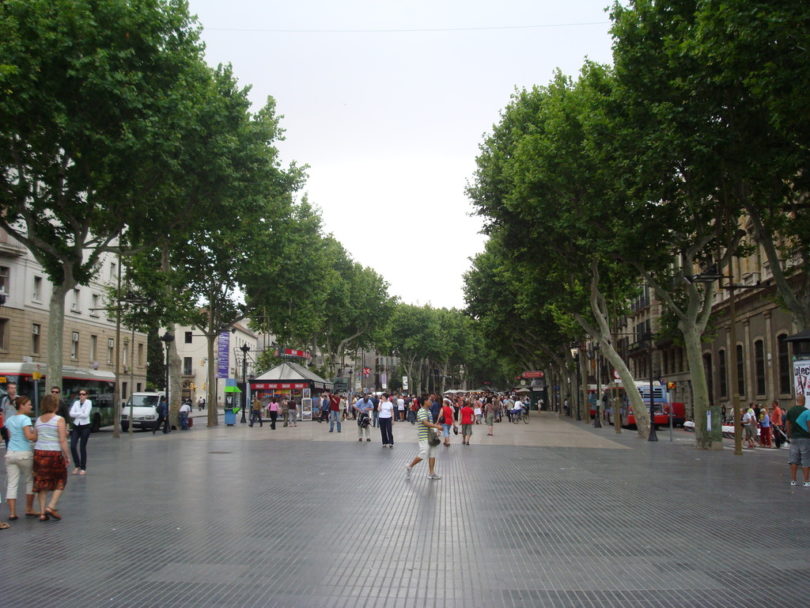
Eric Arthur Blair, better known in popular culture by his pen name George Orwell , was a British novelist, essayist, journalist and socialist. Best known for his prophetic novel 1984 (written in 1949) or the acid satire of Animal Farm (1945), Orwell’s precious bibliography also notably includes “ Homage to Catalonia “.
Related article: The best bookstores in Barcelona
Table of Contents
Adventures in Barcelona
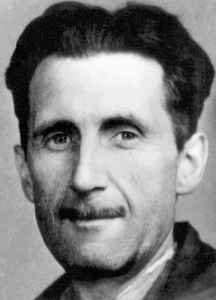
Photo via Pixabay
First published in 1938, Orwell’s tribute to the region recounts his real-life experiences living in Barcelona during the Spanish Civil War , from his arrival on the Christmas of 1936 to his escape in the summer of 1937, as he was a target of the Stalinist secret police.
Initially intending to document the conflict as a journalist, Orwell was soon caught up in the heat of the revolutionary movement, deciding to join the British Independent Labour Party in the fight against fascism in Spain.
“Homage to Catalonia” is thus a memoir of a troubled time in the history of Spain and the region, seen through the eyes of one of the most important writers of the last century.
Related article: 4 books to read that are set in Barcelona
Hotel Continental – Until this day, many foreigners stay at this Las Ramblas hotel due to its mentions in Orwell’s book; this is where he lived with his wife during his stay in Barcelona . After things went awry between the several leftist factions, the Stalinist agents actually went to the hotel while he was absent, intimidated his wife, searched his room and stole his diary. Located in the centre of Barcelona and still retaining most of its traditional charm, Hotel Continental is a piece of the city’s history by itself.
Address: La Rambla, 138, 08002 Barcelona
Teatro Poliorama – During shootings between factions in Las Ramblas , Orwell stayed in this legendary theatre for three days and nights in order to observe the action from the roof. From this area of Las Ramblas it is still possible to identify many of the architectonic features that the British writer described in his book.
Address: Carrer la Rambla, 115, 08002 Barcelona
Liceu metro station (L3/Green Line) – Down from Las Ramblas is the Liceu metro station , which Orwell saw harbour the crowds during a major street shooting.
Felip Neri Square – One of the most painful memories described by Orwell in his book is the bombing of this square and its church by Mussolini’s air force in 1983, killing several people. Now a peaceful place in a corner of the Gothic Quarter, the square still bears its war wounds with a pride and dignity that only adds to its discreet beauty.
Legacy in Barcelona
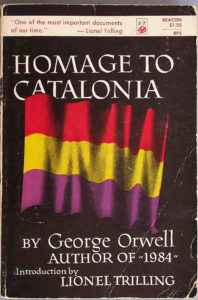
Photo by cdrummbks via Visual Hunt
Plaça de George Orwell is the only tangible reference to the writer in the capital of Catalonia. Located behind Barcelona’s city hall, it features several bars and shops, attracting plenty of young people. Ironically, the area named after the author of “1984” is signalled as being under surveillance , and if you look around you can actually see a few cameras. This is probably due to the fact that it had become a preferred place for young people to consume illegal substances.
There you go. Although this subject touches on a hurtful part of history that people often prefer to forget, if you’re interested in the history of Spain, as well as that of Barcelona , we highly recommend that you read the book and take a tour through the places mentioned, as it will only add to the cultural richness that pervades the city nowadays. Luckily, you get to see a much more beautiful and pleasant Barcelona than George Orwell did. Enjoy all the wonderful things the city has to give you and have fun! As always, feel free to speak your mind using the comment box below.
Looking for a flat in Barcelona? Let ShBarcelona help you find one.
You may also like

Funicular railways of Barcelona
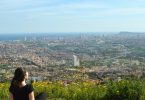
What to See in Santa Coloma de Gramenet
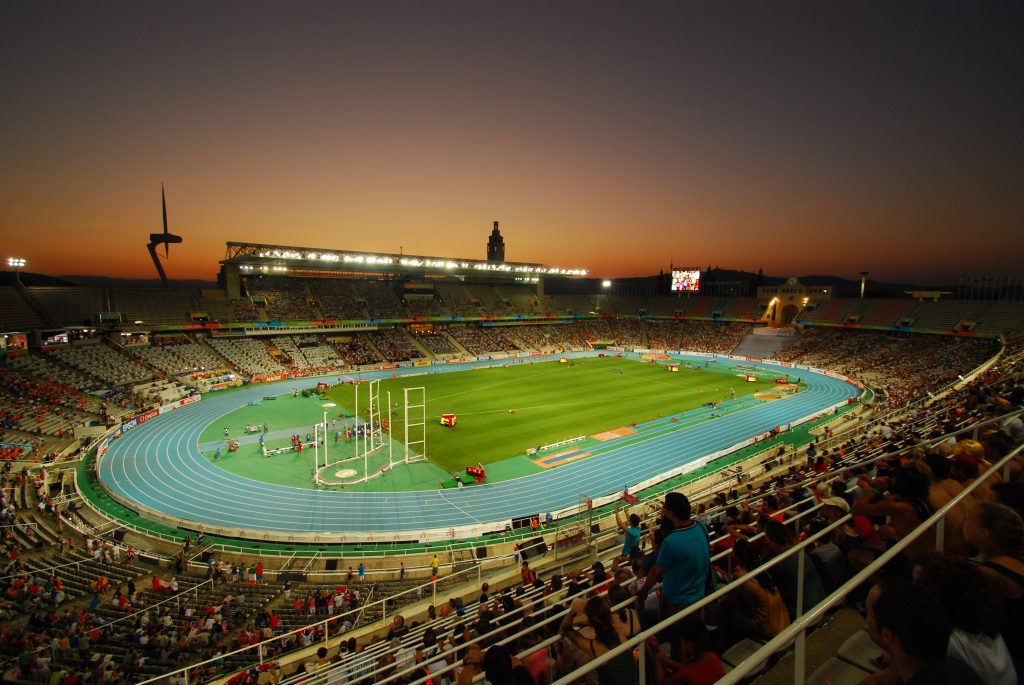
Barcelona for sports fans
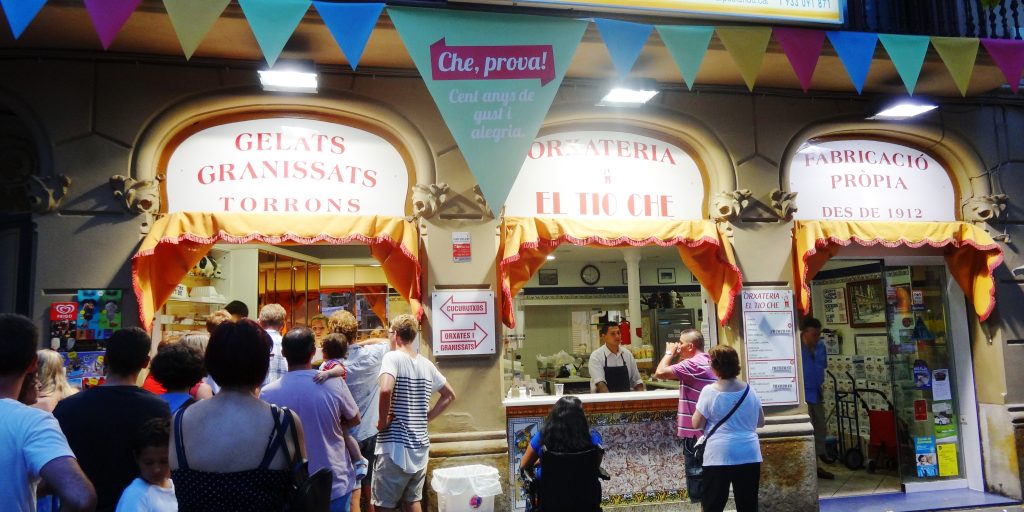
A Walk in La Rambla del Poblenou
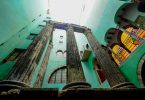
Hidden Gem in Barcelona: Temple of Agustus
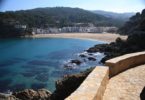
The Great Outdoors in the Costa Brava
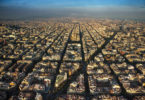
Discover The Enriching Architecture Of Barcelona This Autumn
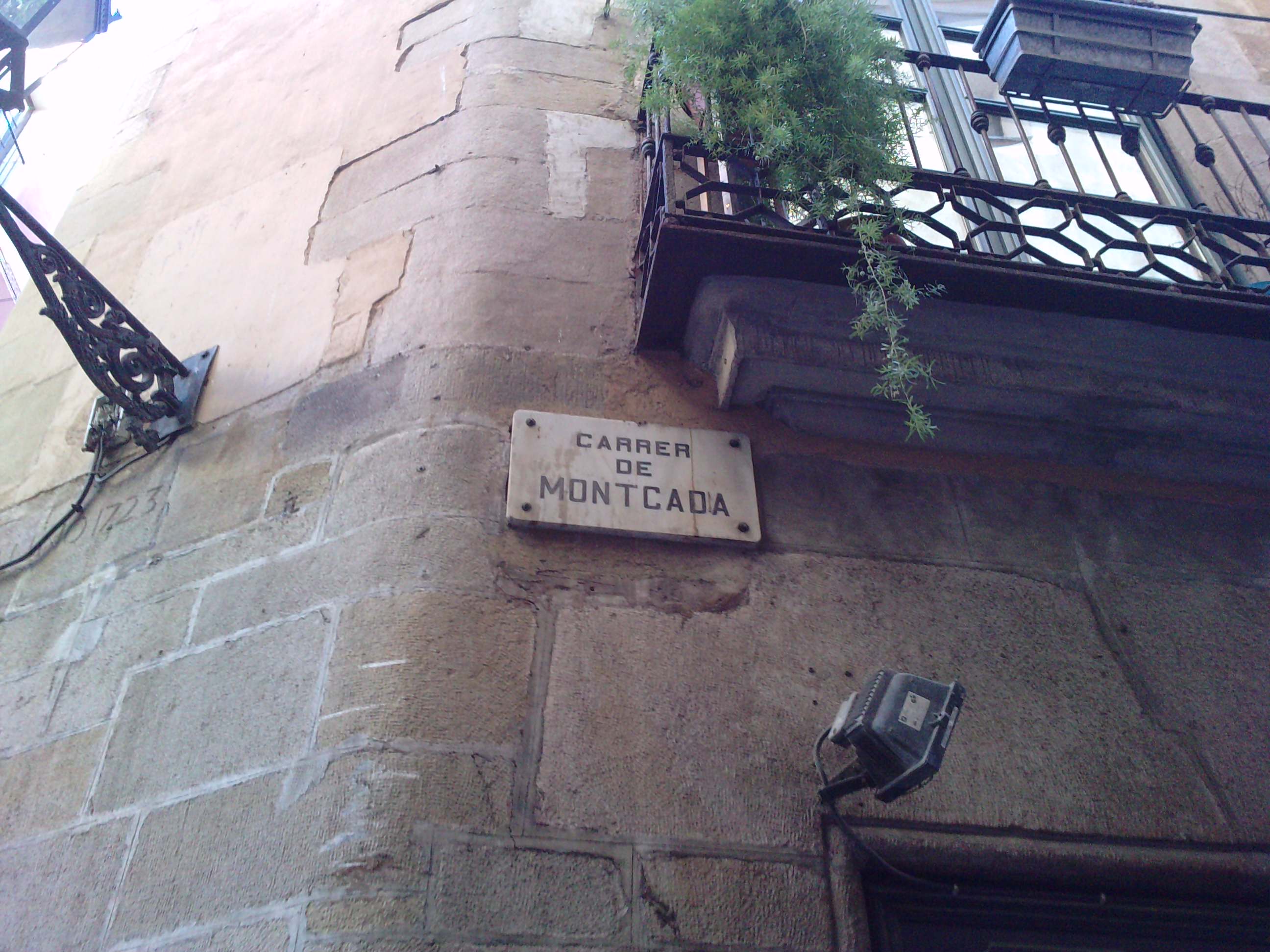
The Museu de Cultures del Món
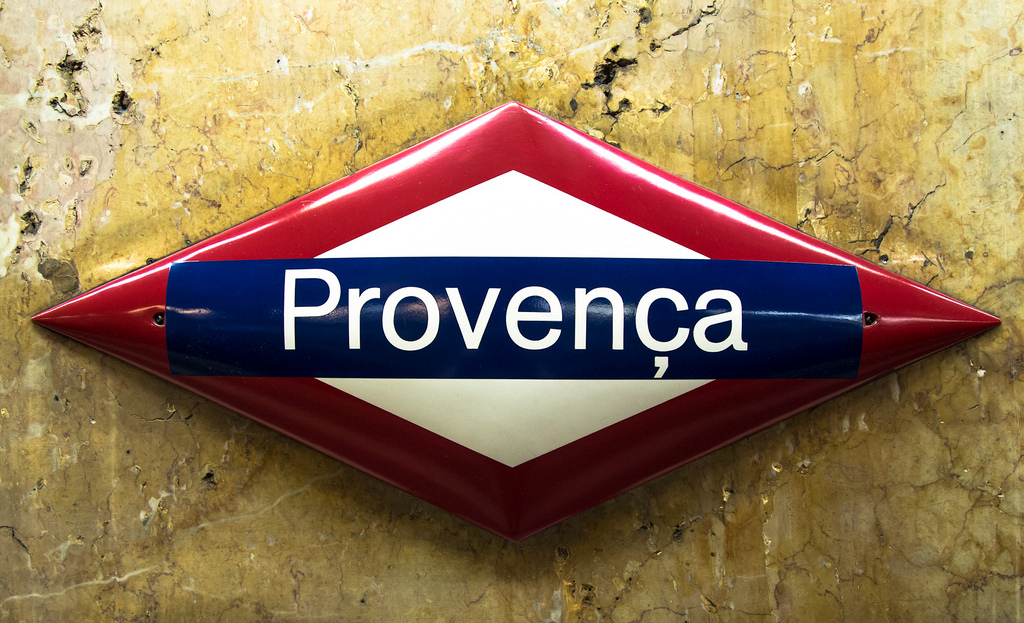
Barcelona Metro Station Names
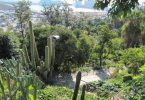
Why you should visit the gardens in Montjuïc
About the author.
Miguel is a freelance writer and copywriter who believes that words can really take you places - so hop on his words and dare to discover the wonders of Barcelona with him.
How did Mussolin’s bombers manage to hit Felip Neri in 1983?
Leave a Comment X

- Privacy Overview
- Strictly Necessary Cookies
- 3rd Party Cookies
This website uses cookies so that we can provide you with the best user experience possible. Cookie information is stored in your browser and performs functions such as recognising you when you return to our website and helping our team to understand which sections of the website you find most interesting and useful.
Strictly Necessary Cookie should be enabled at all times so that we can save your preferences for cookie settings.
If you disable this cookie, we will not be able to save your preferences. This means that every time you visit this website you will need to enable or disable cookies again.
This website uses Google Analytics to collect anonymous information such as the number of visitors to the site, and the most popular pages.
Keeping this cookie enabled helps us to improve our website.
Please enable Strictly Necessary Cookies first so that we can save your preferences!
Plaça George Orwell

Top ways to experience Plaça George Orwell and nearby attractions

- Liceu • 5 min walk
- Jaume I • 5 min walk

Most Recent: Reviews ordered by most recent publish date in descending order.
Detailed Reviews: Reviews ordered by recency and descriptiveness of user-identified themes such as waiting time, length of visit, general tips, and location information.
Also popular with travellers
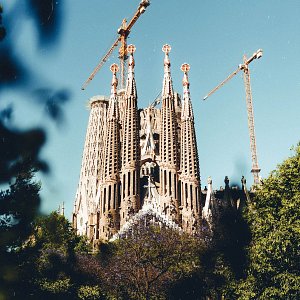
PLAÇA GEORGE ORWELL: All You Need to Know BEFORE You Go (with Photos)
- Walking tour Barcelona (From £43.60)
- The Beauty of Barcelona by Bike: Private Tour (From £68.01)
- Barcelona Gothic Quarter's Deepest Secrets & Sangria (From £47.09)
- Bike tour for families (From £34.01)
- Barcelona Historical Walking Tour with Guide (From £15.69)
- (0.02 mi) ClassBedroom Gothic Ramblas Apartments
- (0.02 mi) Lovely 2-Bed Apartment in Barcelonas best location
- (0.02 mi) Charming Rooms
- (0.03 mi) Aparthotel Arai
- (0.04 mi) Vintage style apartment in Gothic Quarter
- (0.01 mi) Dionisos Gótico
- (0.01 mi) L'Orwell
- (0.01 mi) Pita Gyros
- (0.01 mi) palosanto
- (0.01 mi) Victors Bcn
Plaça George Orwell

Top ways to experience Plaça George Orwell and nearby attractions

- Liceu • 5 min walk
- Jaume I • 5 min walk

Most Recent: Reviews ordered by most recent publish date in descending order.
Detailed Reviews: Reviews ordered by recency and descriptiveness of user-identified themes such as wait time, length of visit, general tips, and location information.
Also popular with travelers

Plaça George Orwell - All You Need to Know BEFORE You Go (2024)
What Orwell Really Feared
In 1946, the author repaired to the remote Isle of Jura and wrote his masterpiece, 1984 . What was he looking for?

The Isle of Jura is a patchwork of bogs and moorland laid across a quartzite slab in Scotland’s Inner Hebrides. Nearly 400 miles from London, rain-lashed, more deer than people: All the reasons not to move there were the reasons George Orwell moved there. Directions to houseguests ran several paragraphs and could include a plane, trains, taxis, a ferry, another ferry, then miles and miles on foot down a decrepit, often impassable rural lane. It’s safe to say the man wanted to get away. From what?
Explore the May 2024 Issue
Check out more from this issue and find your next story to read.
Orwell himself could be sentimental about his longing to escape (“Thinking always of my island in the Hebrides,” he’d once written in his wartime diary) or wonderfully blunt. In the aftermath of Hiroshima, he wrote to a friend:
This stupid war is coming off in abt 10–20 years, & this country will be blown off the map whatever else happens. The only hope is to have a home with a few animals in some place not worth a bomb.
It helps also to remember Orwell’s immediate state of mind when he finally fully moved to Jura, in May 1946. Four months before Hiroshima, his wife, Eileen, had died; shortly after the atomic bomb was dropped, Animal Farm was published.
From the March 1947 issue: George Orwell’s ‘The Prevention of Literature’
Almost at once, in other words, Orwell became a widower, terrified by the coming postwar reality, and famous—the latter a condition he seems to have regarded as nothing but a bother. His newfound sense of dread was only adding to one he’d felt since 1943, when news of the Tehran Conference broke. The meeting had been ominous to Orwell: It placed in his head the idea of Roosevelt, Churchill, and Stalin divvying up the postwar world, leading to a global triopoly of super-states. The man can be forgiven for pouring every ounce of his grief, self-pity, paranoia (literary lore had it that he thought Stalin might have an ice pick with his name on it), and embittered egoism into the predicament of his latest protagonist, Winston Smith.
Unsurprisingly, given that it culminated in both his masterpiece and his death, Orwell’s time on the island has been picked over by biographers, but Orwell’s Island: George, Jura and 1984 , by Les Wilson, treats it as a subject worthy of stand-alone attention. The book is at odds with our sense of Orwell as an intrepid journalist. It is a portrait of a man jealously guarding his sense of himself as a creature elementally apart, even as he depicts the horrors of a world in which the human capacity for apartness is being hunted down and destroyed.
Wilson is a former political journalist, not a critic, who lives on neighboring Islay, famous for its whiskeys. He is at pains to show how Orwell, on Jura, overcame one of his laziest prejudices: The author went from taking every opportunity to laugh at the Scots for their “burns, braes, kilts, sporrans, claymores, bagpipes” (who is better at the derisive list than Orwell?) to complaining about the relative lack of Gaelic-language radio programming.
Scottish had come to mean something more to him than kailyard kitsch. These were a people holding out against a fully amalgamated identity, beginning with the Kingdom of Great Britain and extending to modernity itself. On Jura at least, crofters and fishermen still lived at a village scale. As to whether Jura represented, as has been suggested, suicide by other means—Orwell was chronically ill, and Barnhill, his cottage, was 25 miles from the island’s one doctor—Wilson brushes this aside. In fact, he argues that Jura was “kinder to Orwell’s ravaged lungs than smog-smothered London,” where inhabitants were burning scavenged wood to stay warm.
At Barnhill, Orwell set up almost a society in miniature, devoting his 16-acre homestead to his ideal of self-sufficiency. Soon after moving there, he was joined by his sister, his 2-year-old adopted son, and a nanny. Amid the general, often biting, austerity of postwar Europe, they enjoyed a private cornucopia, subsisting on, as Wilson says, a diet of “fish, lobster, rabbit, venison and fresh milk and eggs,” and were often warmed by peat that Orwell himself had cut. He intended to live there for the rest of his life, raising his son and relishing an existence as a non-cog in a noncapitalist machine.
From the July 2019 issue: Doublethink is stronger than Orwell imagined
He lived without electricity or phone; shot rabbits “for the pot,” as Wilson says; raised geese to be slaughtered and plucked; and fished the surrounding waters in a dinghy. He fashioned a tobacco pouch from animal skin and a mustard spoon out of deer bone, and served his aghast guests a seaweed blancmange. Over time, absconding to Jura and writing 1984 became aspects of a single premonition: a coming world of perpetual engulfment by the forces of bigness. As Orwell’s latest biographer, D. J. Taylor, has pointed out in Orwell: The New Life , Orwell’s novels before Animal Farm followed a common template of a sensitive young person going up against a heartless society, destined to lose. Eileen is the one who helped him—either by suggesting that Animal Farm be told as a fable or by lightening his touch, depending on whom you talk to—find a newly engaging, even playful (in its way), register.
The loss of Eileen and return of the self-pitying Orwell alter ego are certainly linked. And indeed, in 1984 he produces his most Orwellian novel, in both senses—only now both protagonist and situation are presented in the absolute extreme : The young man is the bearer (if we believe his tormentor, O’Brien) of the last shred of human autonomy, in a society both totally corrupt and laying total claim to his being.
What this absolutism produced, of course, was not another fusty neo-Edwardian novel à la Orwell’s earlier Keep the Aspidistra Flying , but a wild, aggrieved tour de force of dystopian erotica. Odd though it may sound, given the novel’s unremitting torments, 1984 quickly became a best seller, in no small part because its first readers, especially in America, found it comforting—a source of the release you might feel, in a darkened theater, when you remember that you yourself are not being chased by a man with a chain saw. The reader could glance up, notice no limitless police powers or kangaroo inquisitions, and say: We are not them .
Such complacency is hard to come by in 2024. Thinking of Orwell, famous though he is for his windowpane prose and the prescience of his essays, as the ultimate sane human being is not so easy either. Rereading 1984 in light of the Jura episode suggests that Orwell was an altogether weirder person, and his last novel an altogether weirder book, than we’ve appreciated.
Conventionally speaking, 1984 is not a good novel; it couldn’t be. Novels are about the conflict between an individual’s inner-generated aims and a prevailing social reality that denies or thwarts them. 1984 is the depiction of the collapse of this paradigm—the collapse of inner and outer in all possible iterations. Of course its protagonist is thinly drawn: Winston’s self lacks a social landscape to give it dimensionality.
In place of anything like a novel proper, we get a would-be bildungsroman breaking through to the surface in disparate fragments. These scraps are Winston’s yearnings, memories, sensual instincts, which have, as yet, somehow gone unmurdered by the regime. The entire state-sponsored enterprise of Pavlovian sadism in Oceania is devoted to snuffing out this remnant interiority.
The facsimile of a life that Winston does enact comes courtesy of a series of private spaces—a derelict church, a clearing in the woods, a room above a junk shop—the last of which is revealed to have been a regime-staged contrivance. The inexorable momentum of the novel is toward the final such private space, Winston’s last line of defense, and the last line of defense in any totalitarian society: the hidden compartment of his mind.
When all else fails, there is the inaccessibility of human mentality to others, a black box in every respect. Uncoincidentally, Winston’s final defense—hiding out in his head—had been Orwell’s first. While he struggled on Jura to finish 1984 , Orwell apparently returned to “Such, Such Were the Joys,” his long and excoriating essay about his miserable years at St. Cyprian’s boarding school. He’d been sent there at the age of 8, one of the shabby-genteel boys with brains in what was otherwise a class snob’s paradise. He was a bed wetter to boot, for which, Orwell writes, he was brutally punished. No wonder he found dignity in apartness. Taylor’s biography is brilliant about the connection between Orwell’s childhood reminiscence and 1984 .
In the essay, Orwell portrays his alma mater as an environment that invaded every cranny of its pupils’ lives. Against this, he formed his sense of bearing “at the middle of one’s heart,” as he writes, “an incorruptible inner self” holding out against an autocratic headmistress. As a cop in Burma, a scullion in Paris, an amateur ethnographer in northern England, he was a man who kept his own company, even when in company, and whom others, as a consequence, found by and large inscrutable.
What was this man’s genius, if not taking the petty anxieties of Eric Blair, his given name, and converting them into the moral clarity of George Orwell? Fearful that his own cherished apartness was being co-opted into nonexistence, he projected his fear for himself onto something he called the “autonomous individual,” who, as he said in his 1940 essay “Inside the Whale,” “is going to be stamped out of existence.” To this he added:
The literature of liberalism is coming to an end and the literature of totalitarianism has not yet appeared and is barely imaginable. As for the writer, he is sitting on a melting iceberg; he is merely an anachronism, a hangover from the bourgeois age, as surely doomed as the hippopotamus.
The fate of the autonomous individual, “the writer,” the literature of liberalism—he carried all of it to Jura, where he dumped it onto the head of poor Winston Smith.
Orwell typed for hours upstairs, sitting on his iron bedstead in a tatty dressing gown, chain-smoking shag tobacco. In May 1947, he felt he had a third of a draft, and in November, a completed one. In December, he was in a hospital outside Glasgow, diagnosed with “chronic” tuberculosis—not a death sentence, maybe, but his landlord on Jura suspected that Orwell now knew he was dying.
The following July, after grueling treatments and a stint in a sanatorium, he returned to Jura fitter but by no means cured, and under strict orders to take it easy. His rough draft, however, was a riot of scrawled-over pages. To produce a clean manuscript for the publisher, he would need to hire and closely supervise a typist, but no candidate was willing to trek to Jura, and Orwell was unwilling to leave it. He typed 1984 on his own, having all but spent himself writing it.
“He should have been in bed,” Wilson says, and instead sat “propped up on a sofa” banging out 5,000 words a day. Among all of its gruesome set pieces, culminating in Room 101 in the Ministry of Love, the novel’s most decisive act of torment is a simple glance in the mirror. Winston is sure—it is one of his last consolations, before breaking completely—that some inherent principle exists in the universe to prevent a system based on nothing but cruelty and self-perpetuation from triumphing forever. O’Brien calmly assures Winston that he’s wrong, that he is “the last man,” and to prove it, and the obvious nonexistence of “the human spirit,” he forces Winston to look at himself:
A bowed, greycoloured, skeleton-like thing was coming towards him. Its actual appearance was frightening, and not merely the fact that he knew it to be himself. He moved closer to the glass. The creature’s face seemed to be protruded, because of its bent carriage. A forlorn, jailbird’s face with a nobby forehead running back into a bald scalp, a crooked nose, and battered-looking cheekbones above which his eyes were fierce and watchful. The cheeks were seamed, the mouth had a drawn-in look. Certainly it was his own face, but it seemed to him that it had changed more than he had changed inside. The emotions it registered would be different from the ones he felt.
The final membrane between inner and outer is dissolving. 1984 can read like Orwell’s reverse autobiography, in which, rather than a life being built up, it gets disassembled down to its foundational unit. The body is now wasting; the voice is losing expressive competence. Worse, the face will soon enough have nothing left to express, as the last of his adaptive neurocircuitry becomes property of Oceania.
1984 is Orwell saying goodbye to himself, and an improbably convincing portrait of the erasure of the autonomous individual. He finished typing the novel by early December 1948. His final diary entry on Jura—dated that Christmas Eve—gave the weight of the Christmas goose “before drawing & plucking,” then concluded: “Snowdrops up all over the place. A few tulips showing. Some wall-flowers still trying to flower.” The next month, he was back in a sanatorium; the next year, he was dead. He was 46 years old.
1 984 was published 75 years ago. Surprisingly, it immediately surpassed Animal Farm as a critical and commercial success. One by one, Orwell’s contemporaries—V. S. Pritchett, Rebecca West, Bertrand Russell—acknowledged its triumph. A rare dissenter was Evelyn Waugh, who wrote to Orwell to say that he’d found the book morally inert. “You deny the soul’s existence (at least Winston does) and can only contrast matter with reason & will.” The trials of its protagonist consequently failed to make Waugh’s “flesh creep.” What, he implied, was at stake here?
Talk about missing the point. Nowhere in Orwell’s work can one find evidence of anything essential, much less eternal, that makes us human. That’s why Winston, our meager proxy, is available for a thoroughgoing reboot. As the book implies, we’re creatures of contingency all the way down. Even a memory of a memory of freedom, autonomy, self-making, consciousness, and agency—in a word, of ourselves—can disappear, until no loss is felt whatsoever. Hence the terror of being “the last man”: You’re the living terminus, the lone bearer of what will be, soon enough, a dead language.
A precious language, indicating a way of being in the world worth keeping—if you’re George Orwell. From the evidence of Jura and 1984 , persisting as his own catawampus self—askew to the world—was a habit he needed to prove he couldn’t possibly kick. He could be the far-off yet rooted man who loved being a father; performing what he deemed “sane” tasks, such as building a henhouse; indulging his grim compulsions (smoking tobacco and writing books). The soul, eternal fabric of God, had no place in that equation.
Waugh wasn’t the only muddled reader of the book. In the aftermath of the Berlin blockade and the creation of NATO , followed by the Soviets’ detonation of their first atomic weapon , readers—Americans, especially—might have been eager for an anti-Stalinist bedtime story. But Orwell had already written an anti-Stalinist bedtime story. If his time on Jura tells us anything, it’s that in 1984 , he was exhorting us to beware of concentrated power and pay attention to public language, yes, but above all, guard your solitude against interlopers, Stalinist or otherwise.
In addition to the book’s top-down anxieties about the coming managerial overclass, a bottom-up anxiety about how fragile solitude is—irreducible to an abstract right or a material good—permeates 1984 . Paradoxically, Winston’s efforts to hold fast to the bliss of separateness are what give the book its unexpected turns of beauty and humanity. (“The sweet summer air played against his cheek. From somewhere far away there floated the faint shouts of children: in the room itself there was no sound except the insect voice of the clock.”) For all of Orwell’s intrepidness, his physical courage, his clarity of expression, his most resolutely anti-fascist instinct lay here: in his terror at the thought of never being alone.
This article appears in the May 2024 print edition with the headline “Orwell’s Escape.”

When you buy a book using a link on this page, we receive a commission. Thank you for supporting The Atlantic.

IMAGES
VIDEO
COMMENTS
George Orwell Day in Barcelona. We are also co-founders and organisers of the annual Barcelona Orwell Day (2013-2023). Reading and media for Homage to Catalonia. Homage to Catalonia (Wikipedia) Looking back on the Spanish War essay by George Orwell (1943) As I please by George Orwell. Column published in Tribune (15 September 1944)
A Look At George Orwell's Barcelona. Tara Jessop 27 April 2017. Back in 1936 when the young Eric Blair - better known under his pen name George Orwell - arrived in Barcelona, the city was in the grasp of an ugly civil war. Some 80 years later, the Catalan capital still bears the scars of its violent past - the legacy of the events ...
TLDR. George Orwell, a renowned author, lived in Barcelona during the Spanish Civil War. He documented his experiences of political unrest and social revolution in "Homage to Catalonia", providing an insightful perspective on 1930s Spain and influencing his later works like "1984".
This tour is centred on George Orwell's experiences in Barcelona between his arrival on Boxing Day 1936 to his escape from Catalonia pursued by the Stalinist secret police in the summer of 1937. Orwell came to the city with is wife with the idea of covering the war as a journalist, but as soon as he arrived he was captivated by the ...
According to Tripadvisor travelers, these are the best ways to experience Plaça George Orwell: Walking tour Barcelona (From $54.95) The Beauty of Barcelona by Bike: Private Tour (From $85.72) Barcelona Gothic Quarter's Deepest Secrets & Sangria (From $59.35) Bike tour for families (From $42.86) Barcelona Historical Walking Tour with Guide ...
This 3-hour walking tour explores the Spanish Civil War in Barcelona and follows Orwell's footsteps during the 1937 May Revolution, described in the author's classic book. It is designed to give visitors a clearer picture of the Spanish Civil War and its impact on Barcelona. Small group size—no more than six people. "Wow!
George Orwell and the Spanish Civil War Barcelona tour. On this guided tour we accompany George Orwell and travel to the war-torn Barcelona of the thirties, which he depicts so vividly. We experience those first few months when the people from Barcelona enthusiastically celebrated the revolution after defeating the right wing rebels.
The Aragon recuperation project of the front line trenches, named the George Orwell Route, is another step in recovering that history. An hour away from the George Orwell Route lies the ruined town of Belchite, another key location during the Civil War. In 1936, a 10-day battle was held in this town resulting in the deaths of over 6,000 people.
Latin American Boom. Contemporary Catalan and Spanish Authors. And much more…. Pricing: Adults - €30. Age 12 - 16 - €10. Under 12 - Free. Duration: 3.5-4 hours. The tour includes a stop in a bar or cafe that allows for a break and to grab some drinks and/or food (not included in the cost and are optional).
George Orwell & the Spanish Civil War is a specialized tour for ToursByLocals only! We'll be learning a lot of facts and figures about the Spanish Civil War and about George Orwell's involvement in it, while strolling through Barcelona's Old Town. We'll be discovering the hidden corners, off the beaten track, that George Orwell visited.
Having stayed in Barcelona several times before, we were looking for something different and this tour in the footsteps of George Orwell was just the ticket. Our guide was Nick Lloyd, author of "Forgotten Places: Barcelona and the Spanish Civil War", who used Orwell's Homage to Catalonia as his guide to the places that Orwell in his role as a ...
On December 26, 1936, Eric Arthur Blair, known to most as author George Orwell, stepped off the train at Estació de França in Barcelona. He would spend the next six months traveling between the regions of Catalunya and Aragon in a fight against fascism, an experience that would inspire his 1938 novel Homage to Catalonia.. The premise of the novel—the outbreak of the Spanish Civil War ...
Find and book tours and tickets to George Orwell Square (Plaça de George Orwell). Experience George Orwell Square (Plaça de George Orwell) by buying tickets with Viator. Free cancellation, payment options and millions of reviews.
Alan Warren offers three- to four-hour George Orwell tours of Barcelona. He charged my family of five €125 ($185). Reach out on e-mail to organize your own tour at [email protected].
Tucked away among the countless alleyways and courtyards of Barcelona's atmospheric BarrioGotico(Gothic Quarter) east of Las Ramblas, triangular George Orwell Square (Plaça de George Orwell) is named after the English author whose novel Homage to Catalonia was published in 1938 after he had spent six months fighting for the Republicans in the Spanish Civil War.
The Sagrada Família is an iconic Roman Catholic church in Barcelona, Spain, designed by the famous Catalan architect Antoni Gaudí. It is an iconic landmark in Barcelona and a UNESCO World Heritage Site, and is often cited as one of the most impressive architectural achievements of the 20th century. The George Orwell connection to the Sagrada Família comes from his famous novel "1984 ...
Plaça de George Orwell is the only tangible reference to the writer in the capital of Catalonia. Located behind Barcelona's city hall, it features several bars and shops, attracting plenty of young people. Ironically, the area named after the author of "1984" is signalled as being under surveillance, and if you look around you can actually see a few cameras.
Book tours and tickets to experience George Orwell Square (Plaça de George Orwell). Reserve a ticket for your trip to Barcelona today. Free cancellation and payment options - Viator. ... Discover a side to Barcelona that most tours won't tell you about. This walking tour takes you back to some of the Catalan city's darkest days and reveals the ...
According to Tripadvisor travellers, these are the best ways to experience Plaça George Orwell: Walking tour Barcelona (From £43.33) The Beauty of Barcelona by Bike: Private Tour (From £67.59) Barcelona Gothic Quarter's Deepest Secrets & Sangria (From £46.80) Bike tour for families (From £33.79)
Find and book tours and tickets to George Orwell Square (Plaça de George Orwell). Experience George Orwell Square (Plaça de George Orwell) by buying tickets with Viator. Free cancellation, payment options and millions of reviews. ... This family-focused bike tour of Barcelona ensures that all family members have fun, whatever their age. In a ...
Top ways to experience Plaça George Orwell and nearby attractions. Barcelona Historical Walking Tour with Guide. 3. Historical Tours. from . $19.97. per adult. ... Poble Espanyol Private Tour in Barcelona with Pick up and Drop off. 2. Luxury Car Tours. from . $527.44. per adult (price varies by group size)
City sights and Orwell tours. Alan Warren offers three- to four-hour tours of the Barcelona of Homage to Catalonia and revolutionary Spain: for €25 (£21.50) for the first person, and €15pp ...
Orwell typed for hours upstairs, sitting on his iron bedstead in a tatty dressing gown, chain-smoking shag tobacco. In May 1947, he felt he had a third of a draft, and in November, a completed one.